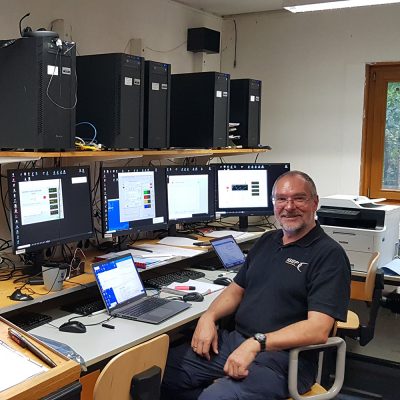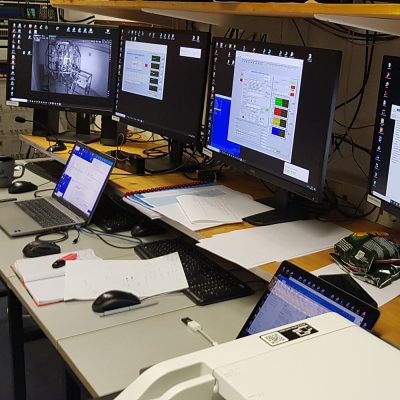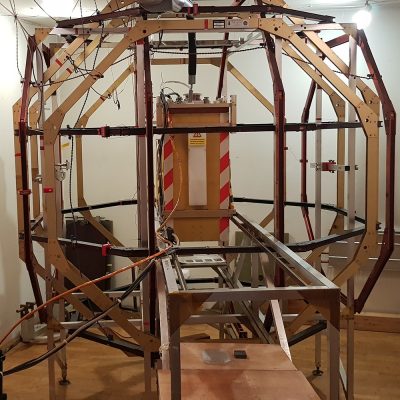TU Braunschweig involved in NASA mission to the Jupiter system In Braunschweig laboratory measuring instruments for the "Europa Clipper" mission are calibrated
The time has come again: In an international tender, the MAGNETSRODE calibration laboratory was selected by NASA to calibrate its magnetometers on the “Europa Clipper” mission. The worldwide unique laboratory was awarded the contract in competition with eight other facilities. The laboratory is operated by the Institute of Geophysics and Extraterrestrial Physics.
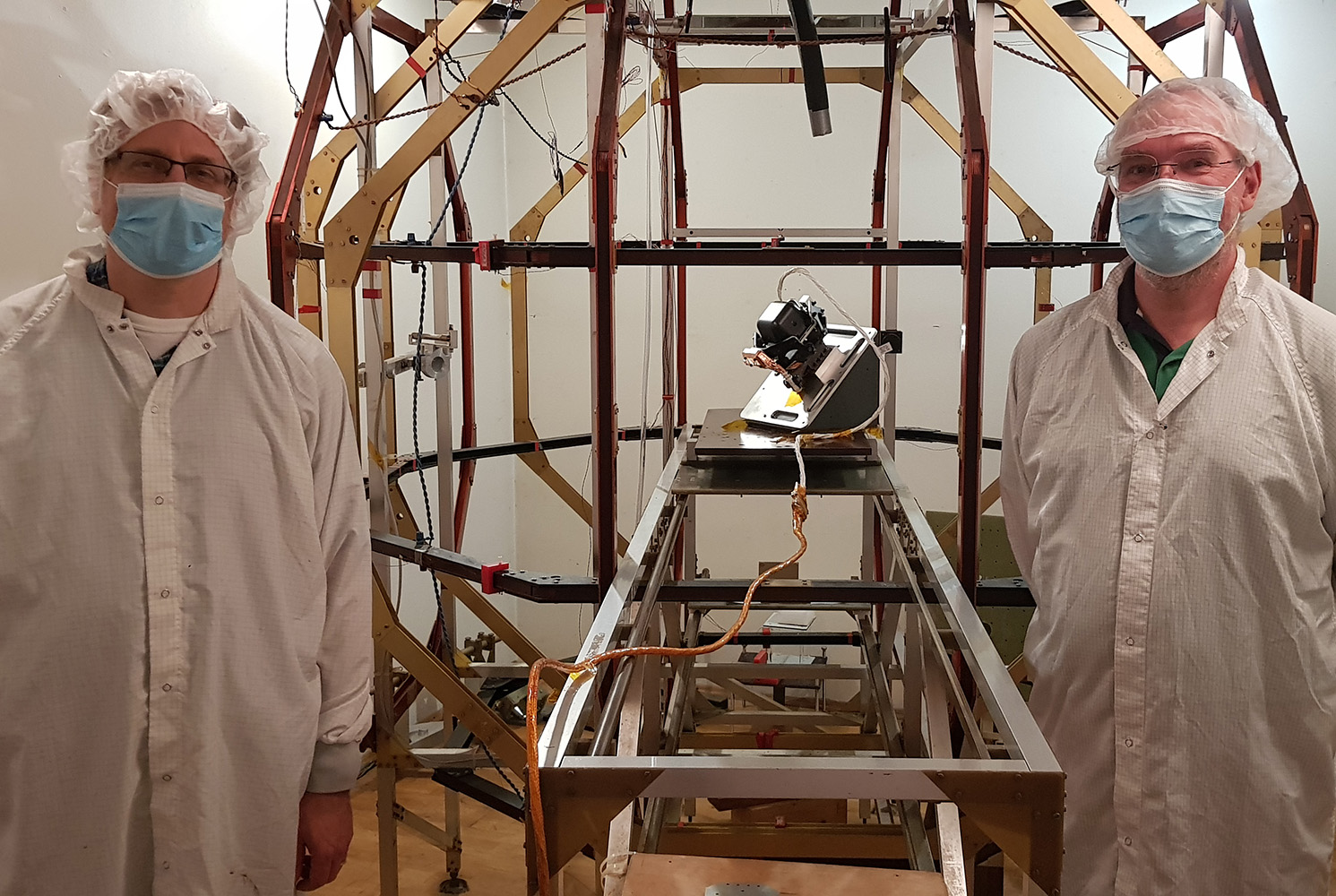
Dr. Haje Korth and Dr. Ingo Richter in front of the Braunbek coil system in Magnetsrode under pseudo-clean room conditions. In the centre you can see a diagonally positioned Europa Clipper magnetometer sensor in the setup for frequency measurements at room temperature. Photo credit: Ingo Richter/TU Braunschweig
„Europa Clipper“ is the name of NASA’s current flagship mission to Jupiter’s moon Europa. The launch of the mission is planned for autumn 2024. The mission duration will be about eleven years. On its way to the moon Europa, the spacecraft will first gain momentum in flybys of Mars and Earth. After about six years of flight through interplanetary space, the spacecraft will be launched into an orbit around JUPITER. Further flybys of Jupiter’s moons Ganymede and Callisto will slow the probe down to such an extent that it will have an orbit that is ideally suited for exploring Europa. Among many other instruments designed to explore whether life is possible on Jupiter’s moon, “Europa Clipper” is equipped with three magnetometers. The magnetometers will help to explore the electromagnetic processes inside the moon.
Before the magnetometers can be used seriously, they must be extensively tested and calibrated. This is where the IGEP of TU Braunschweig comes into play with its MAGNETSRODE calibration laboratory. It was built in the 1960s on a remote part of the former Federal Agricultural Research Centre in an electromagnetically quiet environment. Since then, magnetometers have been successfully calibrated for 30 space missions of many international space agencies.
“Precise magnetic fields of the required accuracy (±100000 nanotesla in all three spatial directions at ±0.8 nanotesla absolute accuracy) can certainly be provided by other facilities, but our facility can also comprehensively test the magnetometers in the computer-controlled temperature range from -196°C to +200°C, which is unique in the world,” says Dr. Ingo Richter, head of the magnet lab.
Of course, frequency responses in the millihertz to kilohertz range could also be measured. “In short, we provide the sensitivities, skew angles, offsets and frequency responses of the magnetometers under test into a wide temperature range for complete characterisation of the instrument properties.”
- MRODE measuring huts from the outside. Photo credit: Ingo Richter/TU Braunschweig
- Dr. Ingo Richter in the control room. Photo credit: Ingo Richter/TU Braunschweig
- In the control room of the magnet lab. Photo credit: Ingo Richter/TU Braunschweig
- Coil system with the thermal box in the centre, in which the sensor to be calibrated is located during the temperature cycles. Photo credit: Ingo Richter/TU Braunschweig
Dr. Richter has been in charge of the laboratory for 22 years and keeps it up to date. This ensures that a precise calibration service can also be offered for future missions and that IGEP’s technical participation in space missions is also possible.
Currently, eleven NASA scientists and technicians from the Jet Propulsion Laboratory (JPL) in Pasadena, California, and the Applied Physics Laboratory (APL) in Laurel, Maryland, are visiting Germany for four weeks and the Magnet Laboratory to have their three sensors extensively tested. By the way: One of the researchers from the USA is Dr. Haje Korth – once a doctoral student at the IGEP under Professor Karl-Heinz Glaßmeier and now a deputy “Europa Clipper” project scientist.
As part of the “Europa Clipper” mission, a second spacecraft will explore the Jupiter system in the next few years. As early as spring 2023, a probe of the European Space Agency ESA will set off in the direction of Jupiter in the JUICE mission (JUpiter ICy Moons) to explore the moon Ganymede. Of course, the JUICE magnetometer was also calibrated here in Braunschweig.
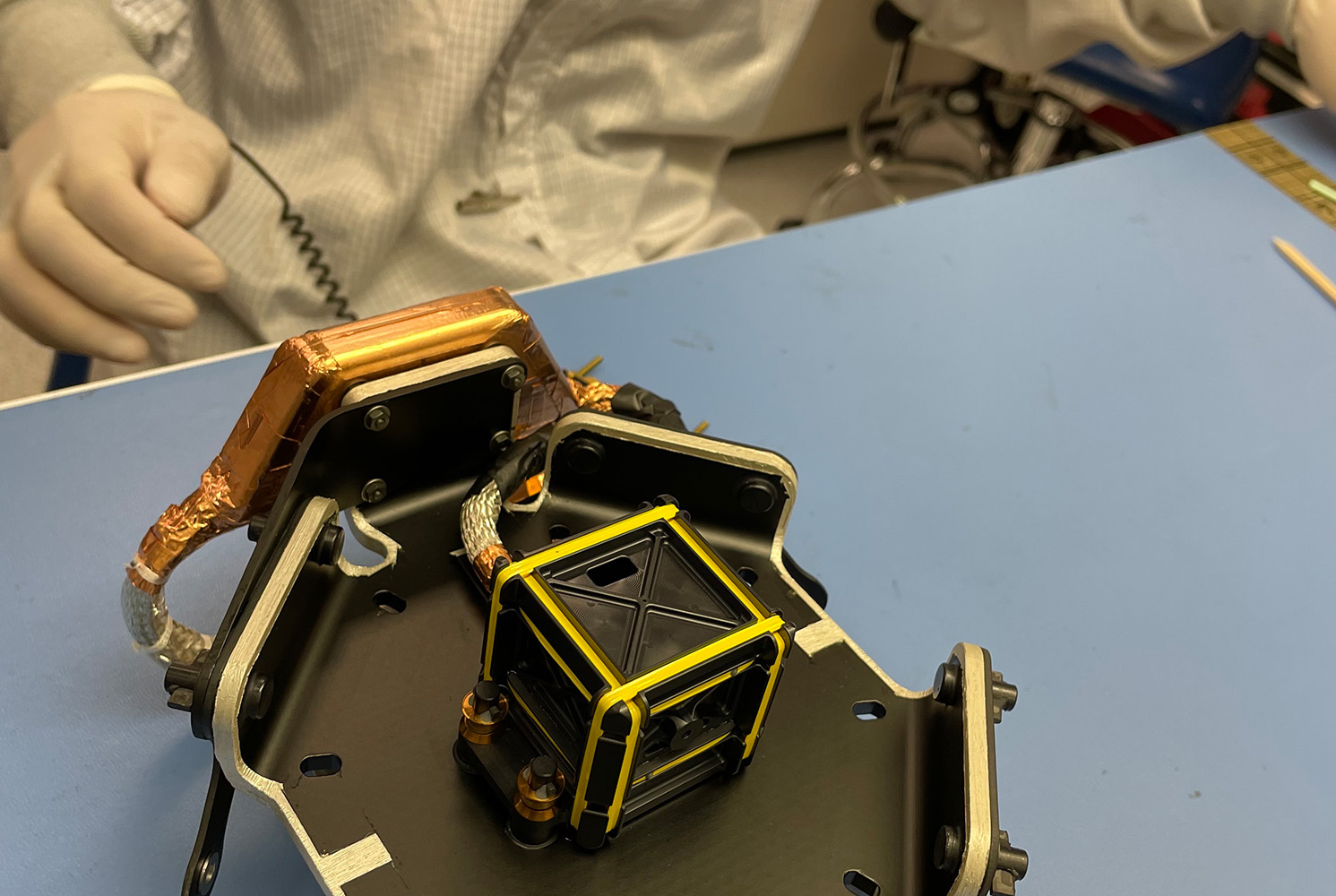
A NASA sensor to be calibrated. Photo credit: NASA/JPL-Caltech


